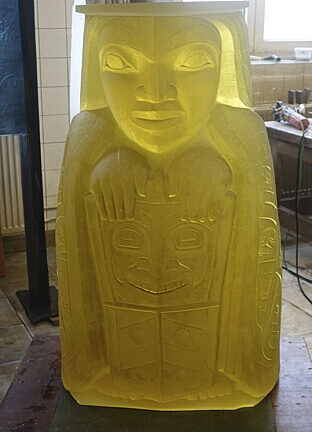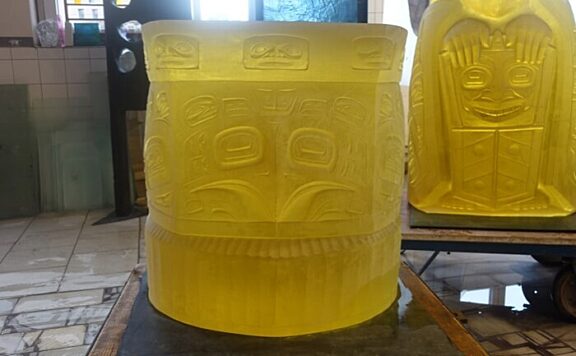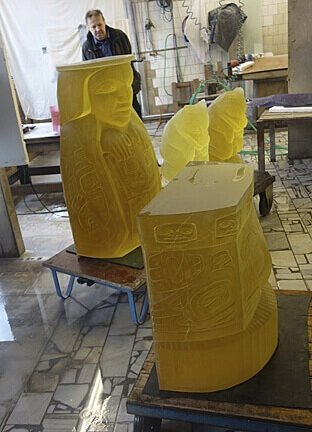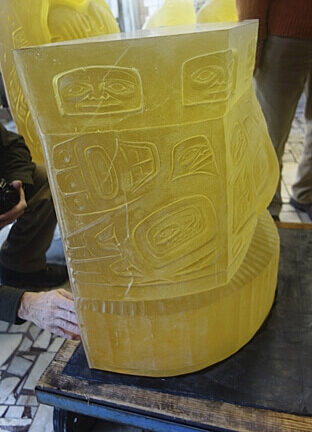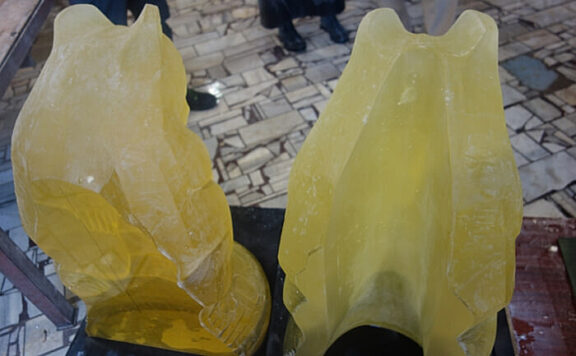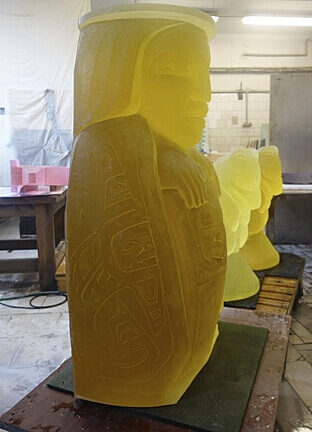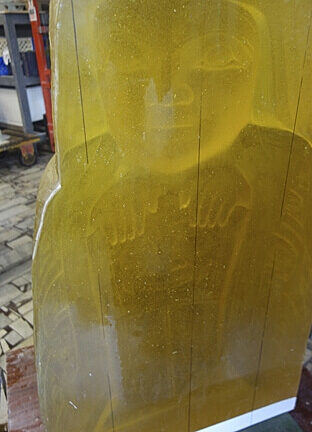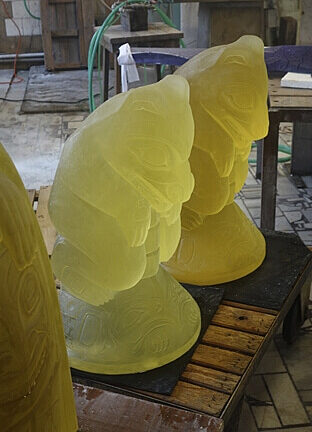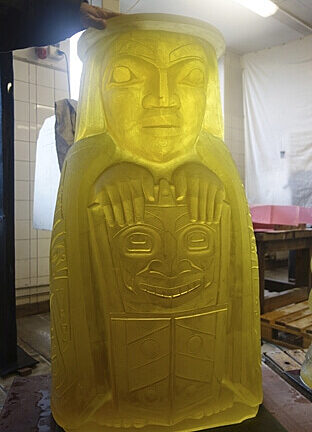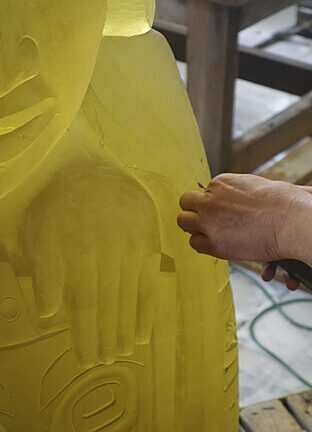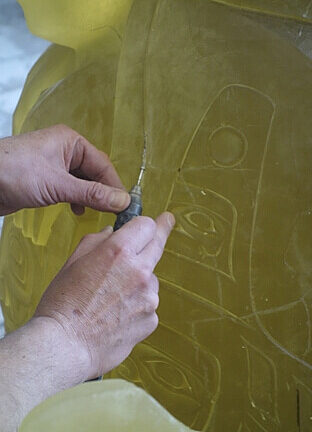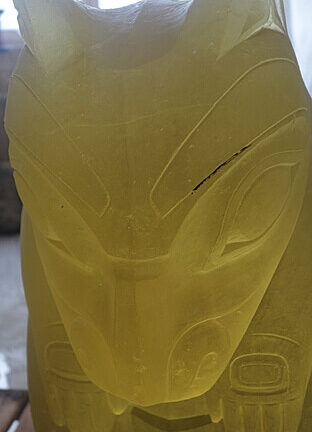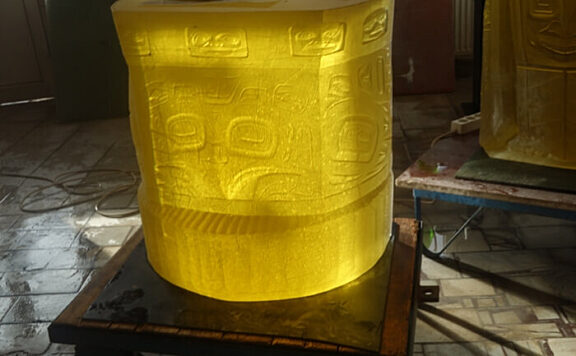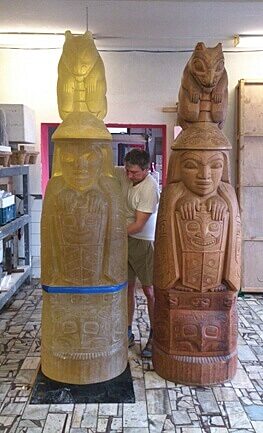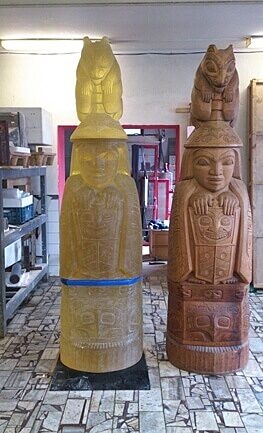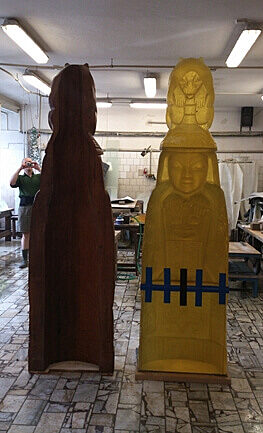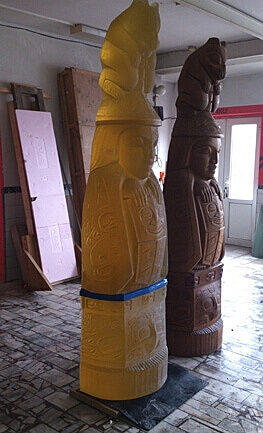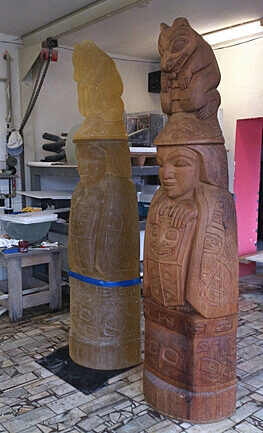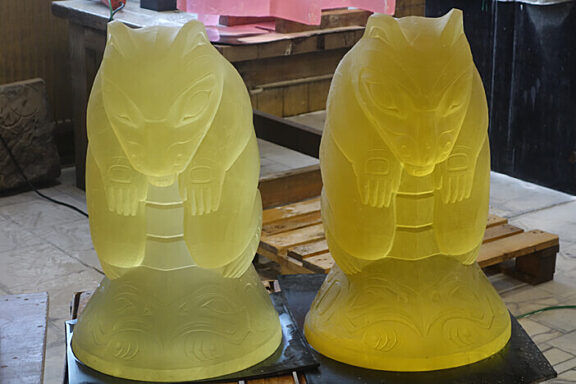Sneak Peek: the Totem Project, Part 5 – in Glass
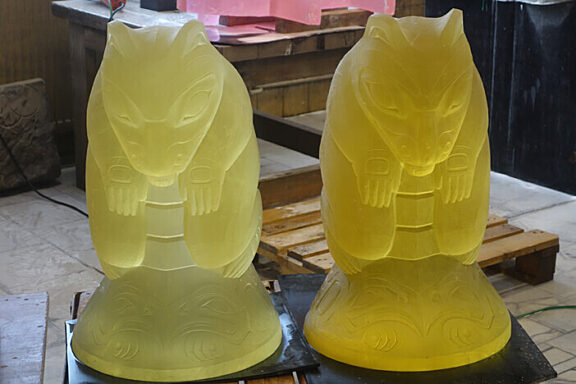
1st February 2013
In Spring 2012, after several months of attempting to cast the totem in glass, FireArt Glass in Portland was unable to create a successful version. The sheer volume of glass required to cast a totem of this size makes it not only difficult to manouver, but extremely volatile to cool evenly. The type of glass used at FireArt may also have been a factor in the instability of the totem.
In the summer, Preston then contacted Charles Parriott, a longtime friend and colleague with professional ties to the glass community in the Czech Republic, to take over as project manager. Almost immediately, we shipped the original wooden totem to the Czech Republic, where Art Fabrication Services EU set to work taking yet another mold from the totem.
They used a tested and approved method of casting monumental glass that was pioneered for massive pieces by Jaroslava Brychtová and Stanislav Libenský in the 1950s. They used a special kind of lead crystal to cast the totem, in a vivid light amber color, which would allow for the best light transmission and internal refraction. It would also be much less likely to form bubbles during cooling in the annealer, but this feature came at a cost: the totem sections would have to cool in the annealer for three months. During that time, the technicians would not be able to check on the sections to see if they had cooled correctly or exploded due to instability.
At the beginning of January 2013, Preston and Charlie traveled to Prague to see what those three anxious months of annealing would produce. What came out was better than they had imagined. The totem glows as if from within when lit, though it is solid and nearly 2 feet deep. The final size is over seven feet tall and it weighs 2,000 pounds.
The photos show the Czech technicians cleaning up the surface of the totem, to allow the original carving marks to be more prominent. They have spent the last 6 weeks completing the surface preparation and testing the glass for stress and structural integrity. The photo of the two top sections (the bear on the hat) show the variation in color that happens when the back of the totem section is hollowed out, as in a traditional carved totem. Preston has decided the richness of the color of the solid version is preferrable.
Yesterday, Preston and Charlie, along with Dante Marioni and our photographer Russell Johnson, flew back to the Czech Republic to give final approval for the totem and to visit other glass studios and schools. Preston will be speaking tomorrow at the Ajeto Art Glass Museum in Nový Bor.
When they return, we will have some wonderful photos by Russell Johnson to share with you!
